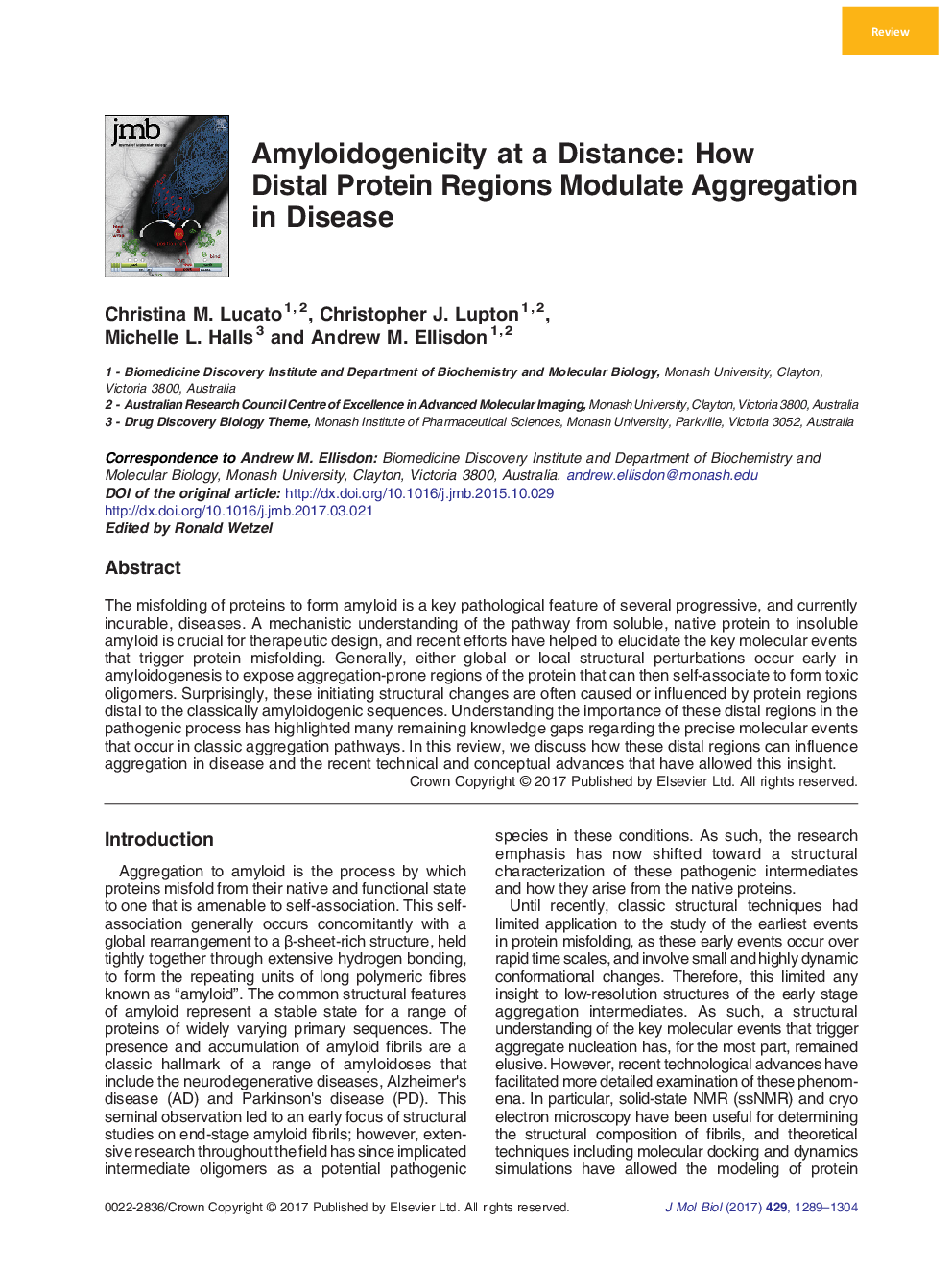| Article ID | Journal | Published Year | Pages | File Type |
|---|---|---|---|---|
| 5533245 | Journal of Molecular Biology | 2017 | 16 Pages |
â¢Protein aggregation to amyloid forms the molecular basis of a range of diseases.â¢Early events in protein misfolding define the aggregation pathway.â¢Recent detailed atomic and temporal insights have explained early misfolding events.â¢Distal regions beyond the classically amyloidogenic domains define aggregation.â¢Therapeutic targeting of distal regions is likely to aid in disease treatment.
The misfolding of proteins to form amyloid is a key pathological feature of several progressive, and currently incurable, diseases. A mechanistic understanding of the pathway from soluble, native protein to insoluble amyloid is crucial for therapeutic design, and recent efforts have helped to elucidate the key molecular events that trigger protein misfolding. Generally, either global or local structural perturbations occur early in amyloidogenesis to expose aggregation-prone regions of the protein that can then self-associate to form toxic oligomers. Surprisingly, these initiating structural changes are often caused or influenced by protein regions distal to the classically amyloidogenic sequences. Understanding the importance of these distal regions in the pathogenic process has highlighted many remaining knowledge gaps regarding the precise molecular events that occur in classic aggregation pathways. In this review, we discuss how these distal regions can influence aggregation in disease and the recent technical and conceptual advances that have allowed this insight.
Graphical AbstractDownload high-res image (193KB)Download full-size image
